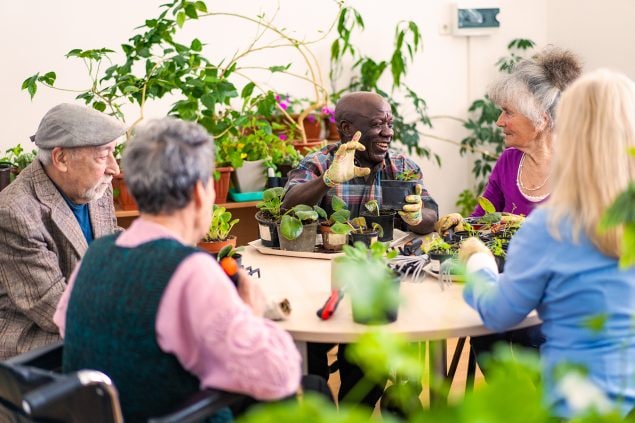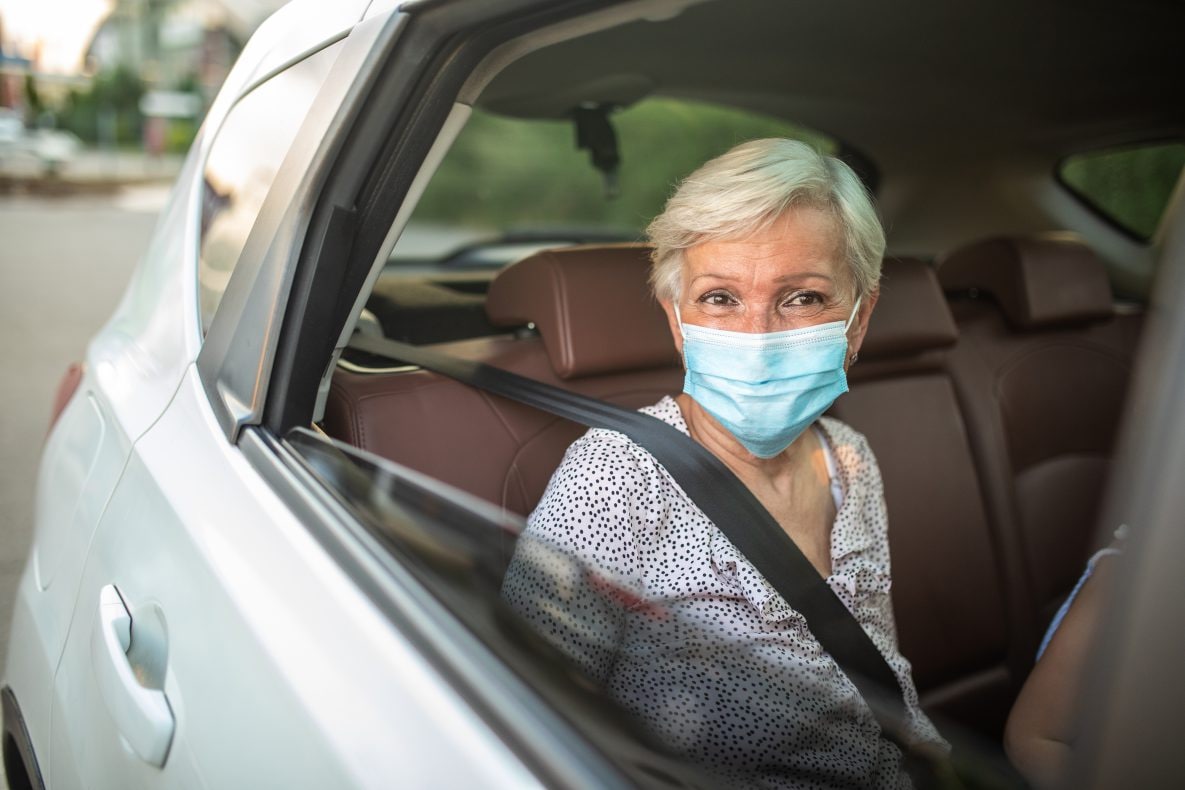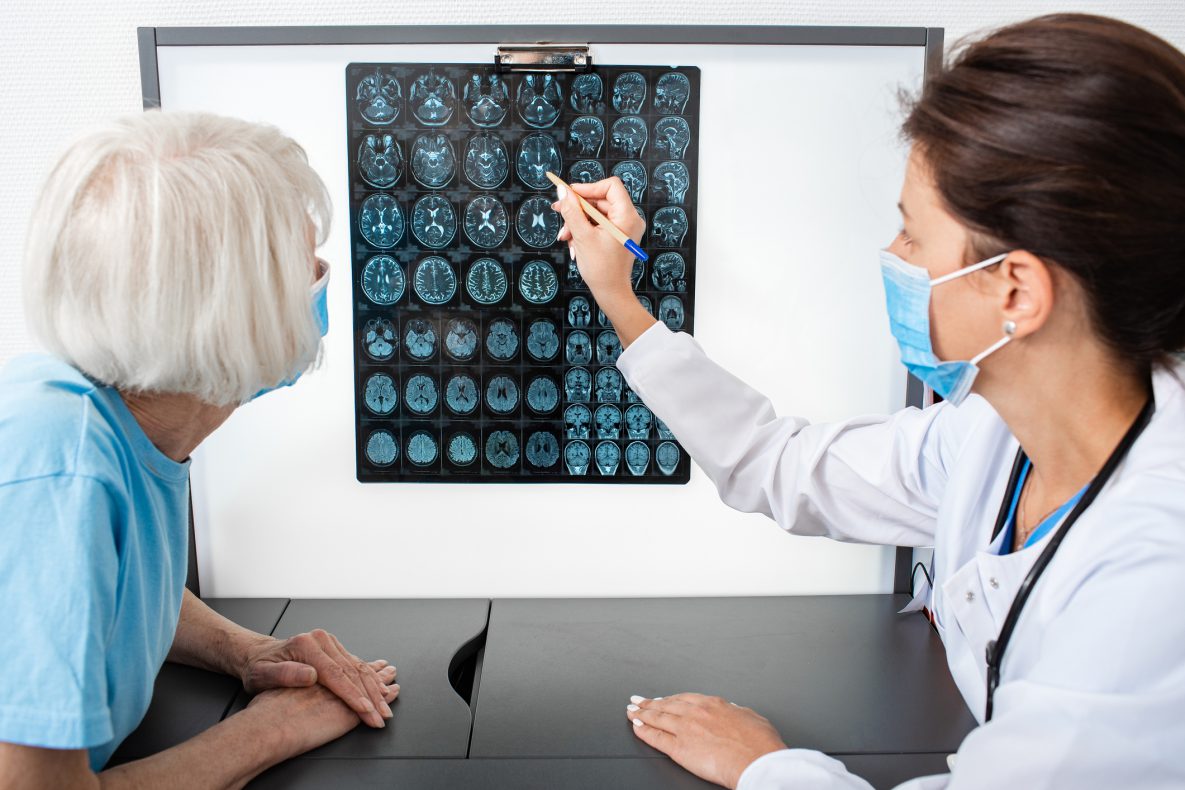Older Adults
Injuries from falls and car crashes are more common as we age. These injuries can have devastating effects. But these injuries can be prevented so you can stay healthy and independent longer.
Social connectedness is the degree to which people feel they belong and are supported and valued in their relationships with others. People who have close, supportive relationships have been shown to live longer, have less stress, better overall physical and emotional health, decreased feelings of loneliness, and greater quality of life.1,2
Social connection or relationships can be with friends, family members, partners, acquaintances, and others in your community.
What does social connectedness look like?3–5
- Meaningful relationships with others
- Consistent, positive interactions with others
- Supportive relationships where you feel valued and cared for
- Emotional support during difficult times and physical support, like running errands or a ride to an appointment
Ways to improve social connectedness

As we get older, it can be difficult to connect with others due to changes in physical abilities, reduced mobility, loss of family and friends, and living alone. However, there are many ways to establish and maintain close relationships with others as we age.
These are some ideas for how you can connect with others:
- Share things you already enjoy doing, such as taking a walk or painting
- Visit community areas such as parks, places of worship, and senior centers
- Engage in new activities and hobbies with others, such as:
- Cooking and baking
- Gardening
- Group sports, like golf and pickleball
- Outdoor adventures, like hiking and kayaking
- Barriers to Social Connection
Identify challenges you may face connecting with others. Talk with a friend, family member, or doctor about overcoming these barriers to maintain your health and independence.
Crafts, like knitting and woodworking
- Group exercise, like water aerobics and dancing
- Arts, like painting and ceramics
- Book clubs
- Games, like card or board games
- Faith-based activities
- Maintain regular in-person interactions with friends and family, and connect by phone or video calls
- Engage in activities you enjoy and adjust when needed based on your physical ability
More than 1 in 4 older adults report falling each year—this results in about 37 million falls.6 Falls can cause serious injuries such as broken bones or a head or brain injury.7 But falls are not a normal part of aging—they can be prevented.
You can take action to prevent falling and stay independent longer.
There are simple steps you can take to keep yourself from falling and stay healthy and independent longer.
Speak up.
- Tell your doctor if you have fallen, if you feel unsteady when standing or walking, or if you are afraid you might fall.
- Ask your doctor or pharmacist to review the medicines you take. Some medicines might make you dizzy or sleepy which can increase your risk of falling.
- Have an eye doctor check your eyes at least once a year and update your eyeglasses as needed.
- Have your doctor check your feet at least once a year and discuss proper footwear to reduce your risk of falling.
- Ask your doctor about health conditions like depression, osteoporosis, or hypotension that can increase your risk for falling.

Stay active.
- Do exercises that make your legs stronger and improve your balance, like Tai Chi.
- Get rid of trip hazards like throw rugs, and keep floors clutter free.
- Brighten your home with extra lighting or brighter light bulbs.
- Install grab bars in the bathroom(s)—next to the toilet and inside and outside of your bathtub or shower.
- Install handrails on both sides of staircases.
- Stay Independent (English | Spanish) [PDF – 2 pages]
- What YOU Can Do to Prevent Falls (English | Spanish) [PDF – 2 pages]
- Check for Safety (English | Spanish) [PDF – 2 pages]
- Are Your Medicines Increasing Your Risk of a Fall or a Car Crash?
- STEADI Fall Prevention Videos for Older Adults
- MyMobility Planning Tool (English | Spanish | Tribal) [PDF – 8 pages]
- Fall Risk Screening Tool: Falls Free CheckUp
- Keep on Your Feet
- Chair Rise Exercise (English | Spanish) [PDF – 1 page]
- Postural Hypotension (English | Spanish) [PDF – 2 pages]
- Physical Activity for Arthritis
Driving helps older adults stay mobile and independent. But the risk of being injured in a traffic crash increases as we age.
As we age, declines in vision and cognitive function (ability to reason and remember), as well as physical changes, might affect our driving abilities.8
You can take action to stay safer on the road and stay independent longer.
There are simple steps you can take to stay safe on the road.
Always wear a seat belt as a driver or a passenger. If you are in a crash, wearing a seat belt is one of the most effective ways to reduce your chance of getting injured. It can even save your life.
Drive when conditions are safest.
- Drive during daylight and in good weather.
- Conditions such as poor weather (like rain or snow) and driving at night increase your chance of a crash.
Never drink and drive.
- Alcohol reduces coordination, impairs judgement, and increases the risk of being in a crash.
Plan your drive.
- Before you drive, find the safest route with well-lit streets, intersections with left-turn signals, and easy parking.

Watch your distance.
- Leave a large following distance between your car and the car in front of you. You may experience delayed reflexes or slower reaction time as you age.
Don’t drive distracted.
- Avoid distractions in your car, such as listening to a loud radio, talking or texting on your phone, and eating.
Get a ride.
- Consider alternatives to driving, such as riding with a friend or family member, taking a ride share service, or using public transportation if possible.
Taking other steps off the road can keep you driving safer, longer.
Speak up.
- Discuss your ability to continue driving with your healthcare providers.
- Ask your doctor or pharmacist to review the medicines you take. Some medicines might make you dizzy, sleepy, or slow your reaction time. This can increase your risk for a car crash.
- Have your eyes checked at least once a year. Poor vision can increase your risk of a car crash.
Keep moving.
- Follow a regular activity program to increase strength and flexibility.
Plan ahead.
- Download and use CDC’s MyMobility Plan to make a plan to stay mobile and independent as you age.

A traumatic brain injury, or TBI, is an injury that affects how the brain works. It may be caused by a bump, blow, jolt to the head, or a penetrating injury such as when an object enters the skull and harms the brain.
There are three main types of TBI:9
- Mild TBI or concussion
- Moderate TBI
- Severe TBI
Most TBIs that occur in older adults are mild TBIs or concussions.10
TBIs are preventable, but they remain a serious public health concern resulting in death and disability for thousands of older Americans each year. Older adults are more likely to have a hospital stay following a TBI compared to all other age groups.11
Falls and motor vehicle crashes are two of the leading causes of TBI-related hospitalizations among older adults.11 The good news is that you can lower your chance of getting a TBI by following steps to prevent a fall or motor vehicle crash.
TBIs may be missed in older adults
TBIs may be missed or misdiagnosed in older adults because symptoms of TBI overlap with other medical conditions that are common among older adults, such as dementia or when older adults have multiple injuries. Your healthcare provider should check you for signs and symptoms of TBI if you have fallen or were in a car crash.
This is especially important if you are taking blood thinners,12 such as:
- Anticoagulants such as warfarin (Coumadin), rivaroxaban (Xarelto), and apixaban (Eliquis)
- Antiplatelet medications such as clopidogrel (Plavix), ticagrelor (Brilinta), and acetylsalicylic acid (Aspirin)
These medicines may increase the risk for bleeding in the brain following a TBI. Bleeding in the brain after a TBI may put a person at risk for more severe injury or death.12
Get medical care for a TBI or concussion
You should see your healthcare provider if you get a TBI or concussion. Your healthcare provider may have treatment to help speed up your recovery.
- Most people with a mild TBI or concussion can recover safely at home following a medical check-up. You may experience short-term symptoms and feel better within a couple of weeks or months.
- People with a moderate or severe TBI may need ongoing care to help with their recovery. You may have long-term or life-long effects from the injury.
If you do get injured, it’s important to know how to spot a concussion or TBI and what to do if you think you have one.
Physical
Physical
Thinking and Remembering
Thinking and Remembering
Social or Emotional
Social or Emotional
Sleep
Sleep
Bothered by light or noise
Bothered by light or noise
Attention or concentration problems
Attention or concentration problems
Anxiety or nervousness
Anxiety or nervousness
Sleeping less than usual
Sleeping less than usual
Dizziness or balance problems
Dizziness or balance problems
Feeling slowed down
Feeling slowed down
Irritability or easily angered
Irritability or easily angered
Sleeping more than usual
Sleeping more than usual
Feeling tired, no energy
Feeling tired, no energy
Foggy or groggy
Foggy or groggy
Feeling more emotional
Feeling more emotional
Trouble falling asleep
Trouble falling asleep
Headaches
Headaches
Problems with short- or long-term memory
Problems with short- or long-term memory
Sadness
Sadness
—
—
Nausea or vomiting (early on)
Nausea or vomiting (early on)
Trouble thinking clearly
Trouble thinking clearly
—
—
—
—
Vision problems
Vision problems
—
—
—
—
—
—
Thinking and Learning
Thinking and Learning
Motor Skills, Hearing, and Vision
Motor Skills, Hearing, and Vision
Emotion/Mood
Emotion/Mood
Behavior
Behavior
Difficulty understanding and thinking clearly
Difficulty understanding and thinking clearly
Weakness in arms and legs
Weakness in arms and legs
Feeling more emotional than usual
Feeling more emotional than usual
Trouble controlling behavior
Trouble controlling behavior
Trouble communicating and learning skills
Trouble communicating and learning skills
Problems with coordination and balance
Problems with coordination and balance
Nervousness or anxiety
Nervousness or anxiety
Personality changes
Personality changes
Problems concentrating
Problems concentrating
Problems with hearing and vision
Problems with hearing and vision
Feeling more angry or aggressive than usual
Feeling more angry or aggressive than usual
More impulsive than usual
More impulsive than usual
Difficulty remembering information
Difficulty remembering information
Changes in sensory perception, such as touch
Changes in sensory perception, such as touch
Sadness, depression
Sadness, depression
—
—

Recovering from a concussion or other TBI is different for each person.
- Recovery depends on many things such as:9
- Your health before the injury
- Type and severity of your TBI (mild, moderate, or severe)
- Access to healthcare and specialized TBI care
- Family and other social support
- It’s important to get plenty of rest after the injury when symptoms are most severe to help your brain heal.
- Ask your healthcare provider questions about your recovery:
- When can I get back to normal activities?
- Is there any activity I should not do, such as exercise?
- When can I return to driving (if you currently drive a car)?
- What medicines should I take (or stop taking)?
- Can I take any other medicines, for example acetaminophen (Tylenol)?
- What other problems, if any, should I look for related to this injury?
- Will I need any special treatment or therapy, like physical therapy?
- When do you want to see me next?
- Holt-Lunstad J. Social Connection as a Public Health Issue: The Evidence and a Systemic Framework for Prioritizing the “Social” in Social Determinants of Health. Annu Rev Public Health. 2022;43:193-213.
- National Academies of Sciences, Engineering, and Medicine. Social Isolation and Loneliness in Older Adults: Opportunities for the Health Care System. National Academies Press (US); 2020.
- Anderson GO, Thayer C. AARP Foundation. Loneliness and social connections: A national survey of adults 45 and older. AARP Research. 2018.
- Lee RM, Draper M, Lee S. Social connectedness, dysfunctional interpersonal behaviors, and psychological distress: Testing a mediator model [PDF – 9 pages]. Journal of Counseling Psychology. 2001; 48(3):310-318.
- Holt-Lunstad J, Smith TB, Layton JB. Social relationships and mortality risk: A meta-analytic review. PLoS Med. 2010;7(7):e1000316.
- Moreland B, Kakara R, Henry A. Trends in Nonfatal Falls and Fall-related Injuries Among Adults Aged ≥65 Years—United States, 2012–2018. MMWR Morb Mortal Wkly Rep 2020; 69:875–881.
- Haddad Y, Shakya I, Moreland B, Kakara R, Bergen G. Injury Diagnosis and Affected Body Part for Nonfatal Fall-related Injuries in Community-dwelling Older Adults Treated in Emergency Departments. J Aging Health. 2020 Dec;32(10):1433–1442.
- Pomidor A, ed. Clinicians Guide to Assessing and Counseling Older Drivers, 4th edition. New York: American Geriatrics Society. 2019.
- Centers for Disease Control and Prevention, National Center for Injury Prevention and Control. Report to Congress on Traumatic Brain Injury in the United States: Epidemiology and Rehabilitation [PDF – 72 pages]. Atlanta (GA): Centers for Disease Control and Prevention; 2015.
- Centers for Disease Control and Prevention, National Center for Injury Prevention and Control. Report to Congress on Mild Traumatic Brain Injury in the United States: Steps to Prevent a Serious Public Health Problem [PDF – 56 pages]. Atlanta (GA); 2003.
- Centers for Disease Control and Prevention, National Center for Injury Prevention and Control. Surveillance Report of Traumatic Brain Injury-related Hospitalizations and Deaths by Age Group, Sex, and Mechanism of Injury—United States, 2016 and 2017 [PDF – 36 pages]. Atlanta (GA); Assessed 2021.
- Maegele M, Schöchl H, Menovsky T, Maréchal H, Marklund N, Buki A, Stanworth S. Coagulopathy and Haemorrhagic Progression in Traumatic Brain Injury: Advances in Mechanisms, Diagnosis, and Management. Lancet Neurol. 2017 Aug; 16(8):630–647.